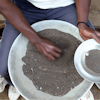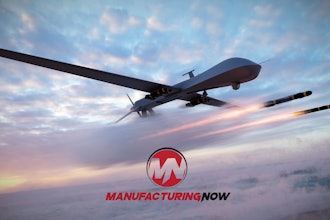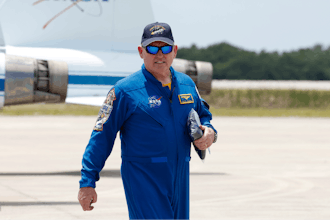By observing the surgeons in the operating room and pre-clinical environments, engineers were able to build an elegant solution that decreased patient recovery times and minimized invasive procedures.
Small, flexible surgical instruments that can move freely within the human body are becoming a reality within the medical industry as part of non-invasive, surgical procedures.
Medical devices, such as the SPIDER from TransEnterix (Morrisville, NC), have helped surgeons decrease recovery times for patients while minimizing the invasiveness of surgery.
The SPIDER (single port instrument delivery extended reach) has provided flexible and strong instrumentation in laparoscopy procedures that allows surgeons worldwide to treat obesity and colon cancer, remove kidneys and gallbladders, and achieve hernia repairs with a single incision through the patients’ belly buttons.
Original Design
The SPIDER concept was conceived in 2006 by a cardiac surgeon, Dr. Richard Stack, who saw that steerable catheter technology, which is commonly used to navigate through arteries and veins, could have some utility on a larger scale in performing tasks in general surgery.
“From that early concept, the SPIDER was born with two flexible catheter-like arms and a rigid center channel for a camera, representing the eyes of the SPIDER,” explains Carson Shellenberger, Director of Engineering, TransEnterix. “The development started as a partnership between Dr. Stack, several other surgeons, and a team of design engineers in California, who took the design and original idea, created the first prototypes and models, and raised the funding that help start the company.”
Shellenberger explains that the surgical instrument was originally intended to perform laparoscopy surgery through the belly button, then developing the device for more complex procedures like bariatric surgery.
Working Closely with Surgeons
The very first SPIDER hit the market in March of 2010, and the success of it depended on the collaboration between the surgeons and engineers.
“Hundreds of preclinical labs were done with the surgeons, and we spent time in the OR watching them use the device and figuring out which components needed to be updated or changed to help improve the SPIDER,” says Shellenberger. “There is no better way to evaluate your device, then to let someone else use it.” The key is listening to the feedback and asking the right questions to weed out all the nuances and shortcomings of the device and help improve it.”
By observing the surgeons in the OR and pre-clinical environments, engineers were able to understand the challenges that were occurring, and help produce elegant solutions that would enhance the efficiency of the instrument.
Design Challenges
Everyone was excited about the idea, but each surgeon wanted to see it done in a particular way. Different surgeons have different ideas regarding how certain surgeries should be performed, and they have different techniques. Each surgeon wanted to drive the design in various directions, but “You have to boil all the information down and design a product that works for everyone,” Shellenberger adds.
Another design challenge was making trade-offs with the typically rod-like rigid tools of laparoscopy, which can be inserted at any angle, and make them flexible so they could be inserted through a smaller hole.
"We also had to make a trade-off with strength,” says Shellenberger. “Anytime we tried to transmit the user’s force from their hands to the tip of the instrument, a lot of energy was being lost; and, if too much energy is lost, the surgeon won’t be as effective in the task they are trying to do.”
To overcome that loss of energy, the design team characterized the transmission of force through the system, and evaluated its effect on all the components involved in the chain to find solutions on how to improve it to an effective, yet flexible, device.
Mission Critical Components
The SPIDER’s most critical components are the cables, which traverse the length of the instrument. They take the energy that the surgeon puts in at the back end, and transfer it to the tip where the surgery is taken place.
“Any loss along the way results in lost precision and strength,” explains Shellenberger. “The cables have to have low friction, low profile, high strength, and high facture resistance; so a lot of work was done to figure out the exact right properties for them.”
The steerability of the SPIDER is controlled by the endomechanical vertebral arms, which provide strength for the dissection and retraction. Shellenberger points out how a lot of time was taken to figure out the right blend of strength, and the number of joints that were needed to replicate the motion of the surgeon’s arms.
Another key component is the gimbal system, which is located at the back end where the surgeon stands. When the surgeon moves his arm left or right, the gimbal system (a ball and socket joint connected to the four cables that go out to the tip of the device) rotates and articulates the arms at the front end articulate.
“The main distinction and advantage with the SPIDER, is the surgeon is in complete control,” says Shellenberger. “There is no software between the surgeon and the SPIDER, and everything is mechanically connected, making the surgeon directly connected to the arms of the system.”
By being directly connected to the SPIDER the chance of error is reduced, translation is not lost, and the complexity and cost of the system is reduced. Additionally, the direct connection makes the SPIDER much easier to use and learn.
Key Advances & Advantages
The SPIDER surgical system offers a lot of key advantages, including a set of interchangeable and detachable flexible instruments. The SPIDER also has increased strength for dissecting and retracting tissue, added precision through the endomechanical arms, and improved ergonomics through a modified surgeon interface.
The flexibility also gives surgeons true-right and true-left movements with angles that optimize reach for a wide range of patient types and operative tasks.
“One of the main advantages of the SPIDER system is its ability to achieve a surgical procedure through one precise incision,” says Shellenberger. “It also helps decrease the recovery time for the patient due to the one incision.”






















